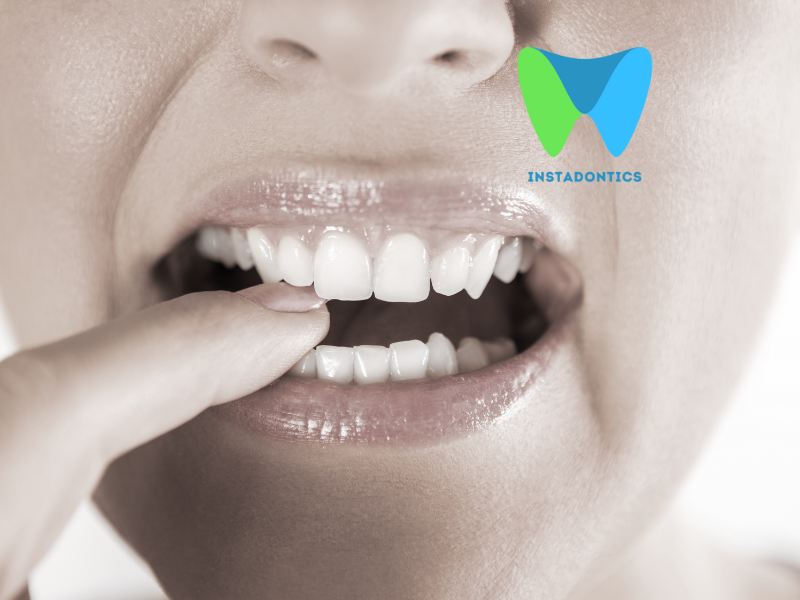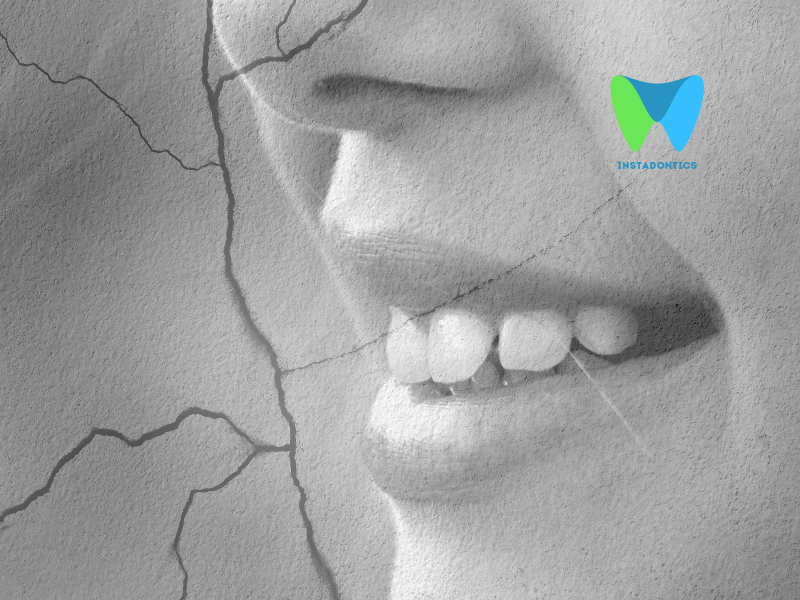Why Do My Teeth Hurt When I Eat Sweets : Causes and Solutions| Many people experience tooth pain when eating sweets, and this discomfort is usually caused by the acid produced by bacteria feeding on sugar in the mouth. This acid can wear down enamel, the protective layer of teeth, making them sensitive to sugary foods.
Tooth sensitivity to sweets often occurs because the enamel is weakened, exposing the underlying dentin, which reacts painfully to certain stimuli. Sometimes, this pain is linked to conditions like dentin hypersensitivity or early tooth decay before cavities form.
Understanding the reasons behind this sensitivity can help people take better care of their teeth and avoid unnecessary pain when enjoying sweet treats. Learning how sugar affects oral health is key to reducing discomfort and protecting teeth over time. For more on why teeth hurt when eating sweets, see this detailed explanation.
Understanding Tooth Sensitivity
Tooth sensitivity to sweets often results from changes in the tooth structure and how nerves inside the teeth react. Several factors influence why certain stimuli like sugar cause discomfort or pain. Understanding these details helps in managing and preventing sensitivity.
How Teeth Respond to Sweet Foods
Sweet foods contain sugars that interact with the bacteria in the mouth. These bacteria ferment the sugars, producing acids that can irritate or damage the teeth. When sugar touches areas where dentin is exposed, it triggers nerve endings, causing a sharp or tingling pain.
The nerves within the tooth pulp react to this stimulus by sending pain signals to the brain. This response is more noticeable if the protective layers of the tooth are compromised. The discomfort usually happens quickly during or after eating sweets and varies in intensity depending on tooth condition.
Common Causes of Sensitivity
Several factors contribute to tooth sensitivity to sweets:
- Cavities or Tooth Decay: These break down enamel and expose dentin.
- Gum Recession: Exposed roots lack enamel and are more sensitive.
- Worn or Cracked Teeth: Damage can leave dentin vulnerable.
- Recent Dental Work: Procedures may temporarily increase sensitivity.
Each of these issues allows sugar and acids to reach sensitive areas, triggering pain signals. Proper dental care and addressing underlying problems reduce these symptoms.
The Role of Tooth Enamel
Tooth enamel is the hard, outer surface protecting the inner layers. It acts as a barrier against acids and sugars. When enamel wears down, it exposes the softer dentin beneath, which contains tiny tubules connected to nerve endings.
Loss of enamel can happen due to acid erosion, abrasion from brushing too hard, or decay. Once enamel is compromised, the dentin absorbs sugary stimuli more easily, causing the tooth to feel sensitive. Protecting enamel is essential to prevent discomfort from sweets. For more information, see how teeth become sensitive to sugar.
Tooth Decay and Cavities
Sugar causes harmful bacteria in the mouth to produce acids that attack the tooth enamel. This process can gradually damage the teeth, causing pain when eating sweets. Understanding how cavities form and worsen explains why sensitivity and discomfort occur.
Signs of Early Cavity Formation
Early cavities often start with white spots or discoloration on the tooth surface. These spots indicate enamel demineralization but may not cause pain yet. Sensitivity to sweets, hot, or cold foods can begin as the enamel thins.
Other signs include roughness or small pits in the tooth surface. Detecting cavities at this stage is crucial to prevent further damage and avoid the need for fillings or more invasive treatments.
How Sugar Leads to Tooth Decay
Sugar fuels bacteria that create plaque, a sticky film clinging to teeth and gums. These bacteria metabolize sugars and release acids, which erode enamel by leaching minerals. Frequent sugar intake extends acid exposure, increasing enamel wear.
Over time, enamel breaks down, exposing dentin, which contains sensitive nerve endings. This exposure causes pain during sweet consumption. Regular sugar intake without proper oral hygiene accelerates acid attack and decay progression.
Progression of Untreated Cavities
If cavities are untreated, enamel damage spreads to inner layers, reaching dentin and eventually the tooth pulp. This can cause persistent pain and increase the risk of infection or abscess.
The decay can lead to tooth fractures or the need for root canal treatment. As the cavity deepens, sensitivity to sweets intensifies, often accompanied by sharp pain or prolonged discomfort after eating sweets.
Exposed Dentin and Nerve Pain
When dentin is exposed, it can trigger sharp pain in response to sweets. This happens because dentin is closely connected to sensitive nerves within the tooth. Several factors can cause this exposure by damaging or wearing down the enamel.
Dentin Structure and Function
Dentin is the layer beneath the enamel, made up of microscopic tubules filled with fluid. These tubules connect directly to the nerve in the tooth’s pulp. When dentin is covered, it protects the nerve from external stimuli like sugar, heat, or cold.
If dentin becomes exposed, the fluid inside the tubules moves in response to sugary substances. This movement irritates the nerves, causing tooth pain or sensitivity. The role of dentin is essential in transmitting sensory information but also makes teeth vulnerable when exposed.
Causes of Dentin Exposure
Enamel erosion is the main cause of exposed dentin. It can occur from:
- Tooth decay or cavities breaking down enamel
- Aggressive brushing wearing enamel thin
- Gum recession exposing the tooth roots
- Acidic foods or frequent sugar intake weakening enamel
When enamel thins or chips away, the underlying dentin is no longer protected. This leaves the sensitive nerve endings exposed to sweets and triggers discomfort or pain. Plaque buildup and poor oral hygiene can accelerate this damage, increasing sensitivity.
Further detail on enamel damage and dentin exposure can be found at Smile Cliniq or Mooney Dental.
Gum Recession and Root Sensitivity
Gum recession exposes sensitive parts of the tooth, increasing discomfort when eating sweets. The condition arises due to several causes that weaken gum tissue and reveal the roots. Exposure of the roots then places sensitive nerve endings closer to stimuli like sugar.
Why Gums Recede
Gums can recede due to poor oral hygiene, aggressive brushing, or gum disease. Plaque buildup causes inflammation, which damages gum tissue and leads to shrinkage. Over time, this exposes more of the tooth’s surface.
Other factors include aging, tobacco use, and genetic predisposition. These increase vulnerability to gum damage. Receding gums reduce natural protection and expose the tooth root area.
Direct Exposure of Tooth Roots
The roots of teeth contain nerve endings not covered by enamel, making them more sensitive. When gums recede, roots become directly exposed to sweets and temperature changes.
Sugar can trigger sharp pain because it interacts with these nerves. This sensitivity may worsen if root surfaces are rough or damaged. Treatment often involves desensitizing toothpaste or dental care to reduce exposure and discomfort.
For more details on gum recession and root sensitivity, visit Healthline’s explanation on inflamed, sore gum tissue and tooth sensitivity.
Dietary Factors Affecting Sweet Sensitivity
Certain diet choices directly influence how sensitive teeth become to sugary foods. Sugar intake and acidic components in the diet both play critical roles by affecting the tooth’s protective layers and nerve endings.
Impact of High Sugar Diets
Frequent consumption of sugary foods contributes to the growth of harmful mouth bacteria. These bacteria metabolize sugar, producing acids that wear down tooth enamel. This erosion exposes the dentin, the sensitive layer beneath the enamel, making teeth more reactive to sweets.
A high sugar diet also increases the risk of tooth decay and cavities, which further heighten sensitivity. People with poor oral hygiene or existing dental issues may notice this pain more intensely. Reducing sugar intake limits acid exposure and helps preserve enamel strength.
Acidic Foods and Beverages
Acidic items such as citrus fruits, sodas, and some fruit juices can thin enamel, lowering its ability to protect teeth from sensitivity. When enamel wears away, the underlying dentin becomes vulnerable to pain triggered by sweets.
Acids disrupt the pH balance in the mouth, creating an environment where enamel demineralization happens faster. This weakens the teeth structurally and aggravates discomfort when consuming sugary foods. Avoiding or moderating acidic intake supports enamel health and reduces sensitivity.
Oral Hygiene Practices and Prevention
Proper oral hygiene is essential to reduce tooth sensitivity caused by sugar. Effective cleaning and the right dental products protect enamel and soothe pain. Maintaining good habits can prevent further damage and help teeth stay strong.
Brushing and Flossing Techniques
Brushing teeth twice daily with gentle pressure helps remove plaque without wearing down enamel. Using a soft-bristled toothbrush is important because hard bristles or aggressive brushing can erode enamel and worsen sensitivity.
Flossing once a day removes food particles and bacteria between teeth where brushes cannot reach. This reduces the risk of cavities and gum inflammation, both of which can contribute to sensitivity when eating sweets.
It’s recommended to brush in small circular motions and avoid scrubbing horizontally. Timing matters too; waiting 30 minutes after eating sugary or acidic foods before brushing prevents enamel damage from softened surfaces.
Choosing the Right Toothpaste
Toothpastes designed for sensitivity usually contain potassium nitrate or stannous fluoride, ingredients that help block the transmission of pain signals from the tooth surface to the nerves inside.
Using such toothpaste consistently can reduce discomfort triggered by sweets. It’s also crucial to select a fluoride toothpaste to strengthen enamel and help repair early decay caused by acid from sugar.
Avoid whitening or abrasive toothpastes, as they can strip enamel further. Following professional recommendations when choosing toothpaste ensures effective protection against sweet-induced sensitivity.
When to Seek Dental Care
Understanding when tooth pain from sweets signals a deeper problem is critical. Persistent discomfort or visible dental issues warrant professional attention to prevent further damage and restore oral health.
Recognizing Persistent Symptoms
If tooth pain triggered by sugary foods lasts longer than a few minutes after eating or worsens over time, it may indicate a cavity or enamel erosion. Other warning signs include sharp pain when biting or exposure to hot and cold temperatures, tooth discoloration, or visible holes.
Pain accompanied by gum swelling or bleeding should not be ignored, as it can signal gum disease or infection. Ignoring these symptoms can lead to more extensive decay or nerve damage.
Patients experiencing recurring sensitivity, discomfort despite good oral hygiene, or noticeable changes in their teeth should contact a dentist promptly to assess the condition.
Professional Treatment Options
Dentists first examine the extent of enamel damage or tooth decay using X-rays and visual inspection. Treatment varies from fluoride treatments to strengthen enamel, to fillings for cavities, or root canals if the nerve is affected.
For enamel erosion or minor cavities, desensitizing toothpaste and protective sealants may be recommended. More advanced decay may require restorative procedures like crowns.
In cases of gum disease, professional cleaning or periodontal treatment is necessary to reduce inflammation and prevent tooth loss.
Early intervention can reduce pain and prevent complications. Regular dental visits help detect issues before symptoms become severe. For guidance on symptoms and treatment, refer to detailed explanations on why teeth hurt when eating sweets.
- Dysgeusia: Causes, Symptoms, and Management
- Signs You Need to Visit Your Dentist
- Understanding Tooth Sensitivity
- The Link Between Diabetes and Gum Disease
- How Diet Affects Teeth Grinding | The Hidden Connection
- The Best Mouthwash for Gum Disease
- Can Tooth Pain Cause Ear Pain?
- Options for Replacing Missing Teeth



